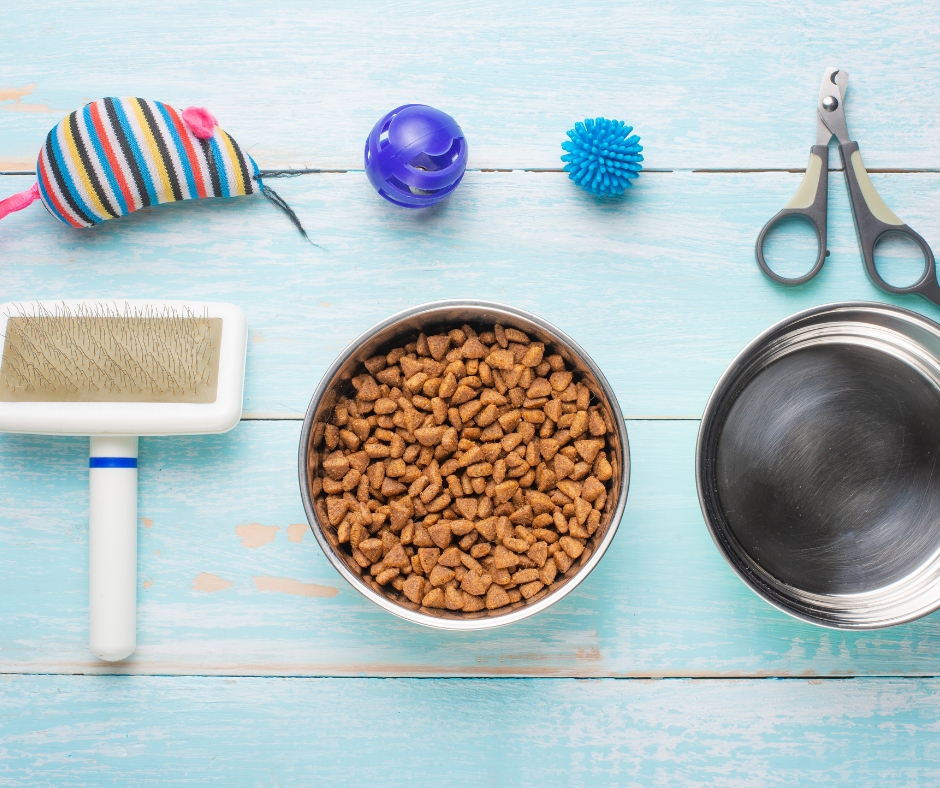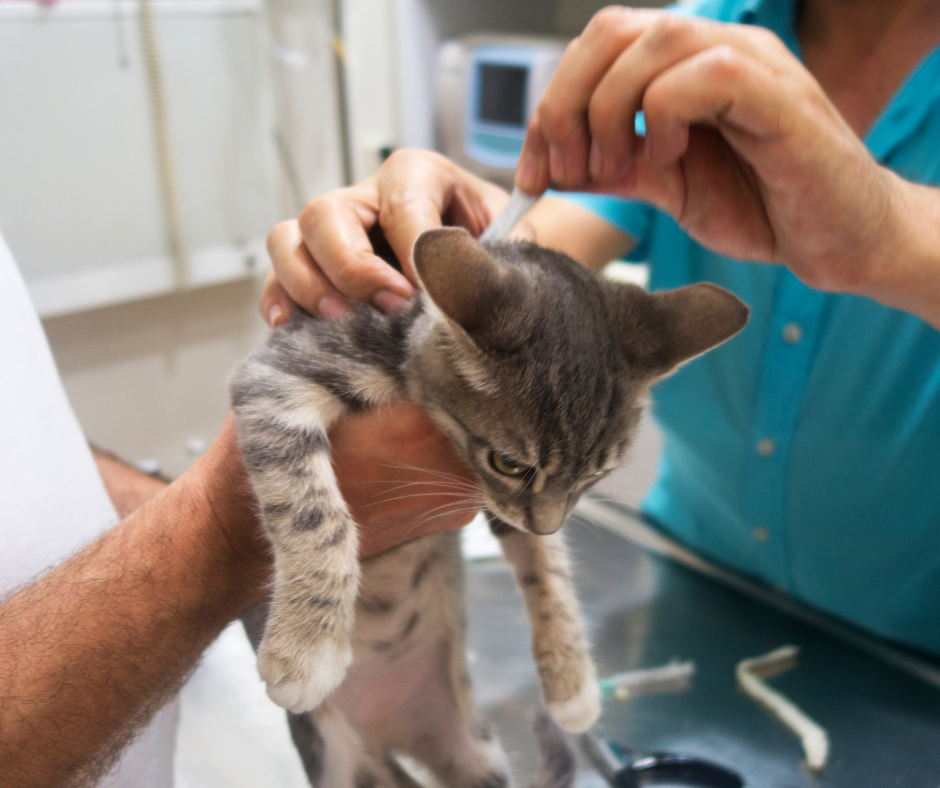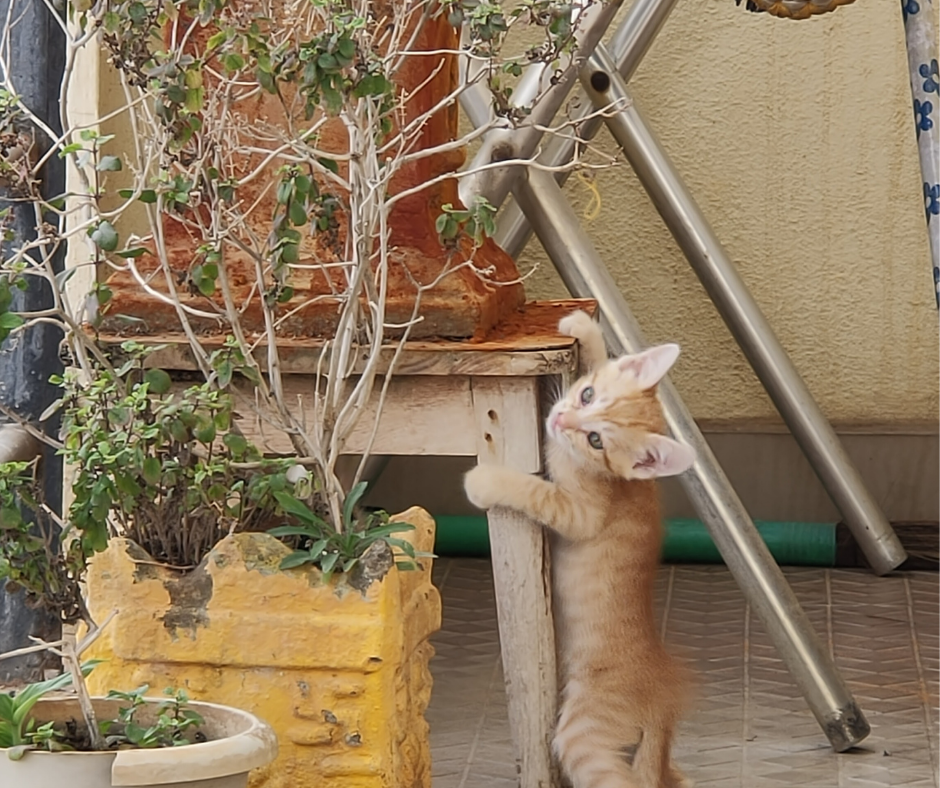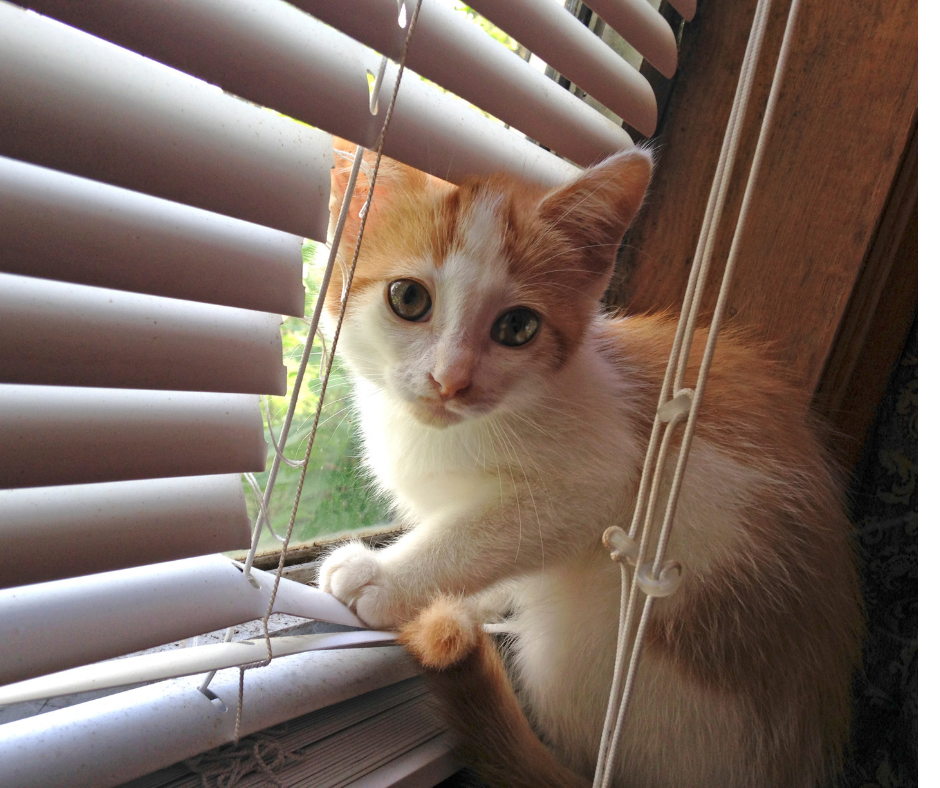Be Aware of Local Govt Laws for Cats
Depending on where you live there are laws and restrictions that you need to adhere to regarding cat registration and containing your cat within your own yard.
For example, within the Brisbane City Council area in Australia cat owners are required to:
- Microchip your cat
- Provide an adequate enclosure to prevent your cat from wandering away from your yard
- Have a permit if you are going to have more than 3 cats in your home
The council also recommends keeping your cat indoors or in an enclosed area outside to prevent it preying on native animals. Putting bells or reflective mirrors on your cat’s collar may also be effective if native wildlife can get into the enclosure.
Even if your council does not have similar laws it would be a good idea to start looking into options for outdoor enclosures or perhaps deciding that your kitten will end up being a completely inside cat. Not only having a plan help keep wildlife safe, but it will also help keep your fur baby safe too.
Start Your Shopping List
This is perhaps the most enjoyable part of preparing for your new kitten; of course, other than when you get to bring them home for their first cuddles.
- Litter Tray and Litter
There are many options today for cat litter.
When choosing cat litter, consider the smell, ingredients, biodegradability, and suitability for composting.
The most common options are:
- Clay litter.
- Natural litter is typically made from corn, wheat, and pine.
- Crystal litter is made from silica crystals and is non-clumping.
- Paper litter is made purely out of recycled paper,
- Scratching Post
A scratching post is a must for any cat! Your kitten will use a scratching post to away dead scales from their claws and mark their territory (both visually and with scent). You will want to get a scratching post right away and train your kitten early, so they do not use your furniture or carpet instead. Try to place your kitten’s bed and scratching post close together so they learn to use it when they first wake up and need a stretch. By placing it near their bed, it will also help them to learn early that their scratching post is just for them.
- Comfortable bedding
While it is highly likely that your kitten might be just as happy to curl up in an old cardboard box, but choosing bedding is important, it gives them not only a comfy place to sleep but also a safe space that they can retreat to if they need to.
When choosing bedding, consider if you wish for it to be enclosed or if you would like
- Toys
There are many options for play toys for your kitten. Play for kittens tend to mimic stalking and hunting so pick items that they can pounce or jump on and can safely bit or claw. They will generally prefer small objects that can easily be moved with their paws or grasped in the mouth. You do not have to spend a fortune to entertain your kitten, start with one or two simple toys and you can even find things around the house that you can use to entertain them.
- Cat Carrier
Even though you may not plan to transport your kitten very often you will still need a cat carrier to safely take them to their vet visits or if you ever need to take them to a groomer, pet sitter or cattery when you go away on holidays.
- Collar
When choosing a collar for your kitten or cat, make sure that it is cat safe. A collar that is cat safe will be made to give way under pressure when caught, either by being made of stretchy material or having a breakaway clasp.
As your kitten grows make sure that you replace their collar with one that is suitable for their size.
It would also be a good idea to add an ID tag with their name and your contact details.
- Harness
If your kitten is going to be predominately an inside cat you will want a suitable harness when taking them outside for a walk or even if you are able to toilet train them to go outside rather than in a litter tray.
Make sure you do get a harness suitable for a cat not just a dog harness.
- Grooming Supplies
While cats do tend to be good groomers, it is still important to have the right tools to take care of their coats. If you have a kitten with a longer coat like a Ragdoll, it is a good idea to purchase a de-shedding comb.
Regular grooming: including brushing, bathing, shaving, and claw trimming offers many benefits, including promoting a healthy coat, eliminating odours and matted fur, and reducing yucky hairballs.
Grooming also helps alert you to ticks, wounds, lumps, and skin problems in your cat, so you can monitor and maintain your cat’s health effectively.
- Appropriate Food (we will highlight this further in this article)
You should talk to your vet or pet health care professional to seek their recommendations on foods for your kitten.
Your kitten should be eating a good quality kitten food, or a food labelled for all feline life stages. Even as you introduce her to other foods, this should be her primary food as too many changes can cause digestive upsets. Feel free to change flavours of food but remain within the same brand to maintain some consistency.

Put Together Your Kitten Survival Kit
Much like a first aid kit for your household, it is important to make sure you have a first aid / survival kit for your kitten in the case of an emergency.
Having a kit prepared will take away some of the stress and worry you might face should your new kitten get themselves into trouble.
• Gauze, scissors, tape, rubber gloves
• Wet or grooming wipes
• A towel or blanket
• Collapsible travel food and water bowls
• Medications
• Antibiotic Ointment
• Cotton balls or swabs
• Ice pack
• Scissors with blunt end
• Tweezers
• Oral syringe
• Styptic powder
• Saline eye solution
• Phone number, clinic name, address of your veterinarian as well as local veterinary emergency clinics.
Choose Your Vet Care
Choosing the right vet for your fur baby is something that you should carefully consider. This is the person that could potentially save your pet’s life and keep them healthy. Both you and your pet should feel comfortable about this person before you make a long-term commitment to work with them.
Your vet should not only be able to take care of all the routine healthcare involved in looking after your pet but should also be able to foresee potential health problems and medical conditions and assist with preventative care.
It makes sense that you take the time to research the vets in your area to find the one that best works for you and your needs.
You can read our tips on how to choose the right vet for your pet HERE

Decide on a Diet for Your Kitten
Your kitten’s diet can make all the difference in its future health and well-being. Before you decide on a kitten food, do your research. Talk to your vet, other pet professionals, and fellow cat owners. Remember that if the food you initially choose does not meet your expectations, you can gradually switch to another food.
In today’s pet-friendly world, the choices of diet seem endless. Some owners like to feed premium foods, while many feel that holistic/natural diets are best. Homemade and raw diets are also becoming increasingly popular.
When researching kitten food, consider the quality of ingredients, inclusion of proper nutrients, and taste. Make sure to choose a food that is appropriate for growth—not adult cat food or “maintenance” formulas. The food should be healthy for your kitten and your cat should enjoy eating it.
Remove Any Plants That Might Be Poisonous to Your Kitten
A houseplant may seem innocent, but some can cause serious problems for your paws. From mild irritation and digestive upset to organ failure and even death if your kitten decides to take a chew on certain plants.
Some common household plants to avoid are:
Here is a list of some common plants that are toxic to cats:
- Amaryllis (Amaryllis spp.)
- Autumn Crocus (Colchicum autumnale)
- Azaleas and Rhododendrons (Rhododendron spp.)
- Castor Bean (Ricinus communis)
- Chrysanthemum, Daisy, Mum (Chrysanthemum spp.)
- Cyclamen (Cyclamen spp.)
- Daffodils, Narcissus (Narcissus spp.)
- Dieffenbachia (Dieffenbachia spp.)
- English Ivy (Hedera helix)
- Hyacinth (Hyacintus orientalis)
- Kalanchoe (Kalanchoe spp.)
- Lily (Lilium sp.)
- Lily of the Valley (Convallaria majalis)
- Marijuana (Cannabis sativa)
- Oleander (Nerium oleander)
- Peace Lily (Spathiphyllum sp.)
- Pothos, Devil’s Ivy (Epipremnum aureum)
- Sago Palm (Cycas revoluta)
- Spanish Thyme (Coleus ampoinicus)
- Tulip (Tulipa spp.)
- Yew (Taxus spp.)
* Please note this is not a full, extensive list of plants that can be dangerous for your kitten

Safely Store Your Poisons
Whether it is household cleaners, detergents, glue, or garden and automotive chemicals, most homes are bound to have a few toxic substances that need to be safely stored away. While “child proof” safety caps are a challenge for even us adults, they cannot stand up against those sharp kitten teeth, so even bottles with these caps do need to be put away safely. Antifreeze (engine coolant) is very enticing to pets possibly due to its sweet taste, so take extra care with these and make sure any spills are cleaned up thoroughly. Rat and mouse poisons as well as slug baits need to be kept out of reach, perhaps consider a more natural approach to dealing with these critters and avoid the use of such poisons.
Secure Window Dressing Cords
Just like small object that are dangerous for little people, cords used to tie back curtains or to open blinds can be a strangulation risk for your kitten.
Do not let cords dangle into or near your kitten’s reach. Make sure you consider anything that they can climb up on to reach the cords.
Avoid low hanging cords by making sure the bottom of any blind or curtain cord is at least 160cm above the floor. Wrap blind cords securely around a hook attached high on the wall. This is mandatory in Australia after several reports of child deaths caused by unsecured blind cords, the Australian Competition and Consumer Commission (ACCC) implemented a mandatory standard for manufacturers to adhere to when producing blinds, curtains, and other window fittings.
For older blinds, install a cord tensioning device, such as cord holders and wind-ups, to hold the cord tight against a wall. Alternatively, retrofit the blind or curtain cord with breakaway tassels.
Safety products can be bought from hardware or curtain shops.
New blinds must meet safety standards and be installed according to the installation instructions on any retail packaging for the covering.
If you have your blinds or window coverings professionally installed, the installation must meet safety standards. They must also be installed according to the instructions on any retail packaging for the covering.
The corded internal window covering must be installed in a way that ensures a loose cord cannot form a loop 220mm or longer at or less than 1,600mm above floor level.
Hanging strings and cords can cause kittens to become entangled, increasing the risk of strangulation. Either tie up the excess cords or cut the loop in the cord.

Power Cords and Cables
Protect your new kitten from accidental shock, burns to the mouth, or worse, by using sturdy cord covers or deterrent sprays on electric cords, chargers, and power cables. Of course, a young kitten should always be supervised when they are first brought home, also providing plenty of attention and toys will also help to give keep your kitty busy and not interested in dangerous power cord.
It is also a good habit to turn power points off when appliances are not in use.
Keep in mind also cables for TVs and other similar appliances that your young kitten could play with or try to climb and dock the appliance down, not only causing a risk to your kitten but also costly damage to your TV.
Bringing a new kitten home is an exciting time, we hope these tips help make the planning easier for you and the transition a smooth one.
Make sure you join our Facebook Group Community to get our latest hints and tips for your fur babies 4 PAWS ON BOARD – GROUP


